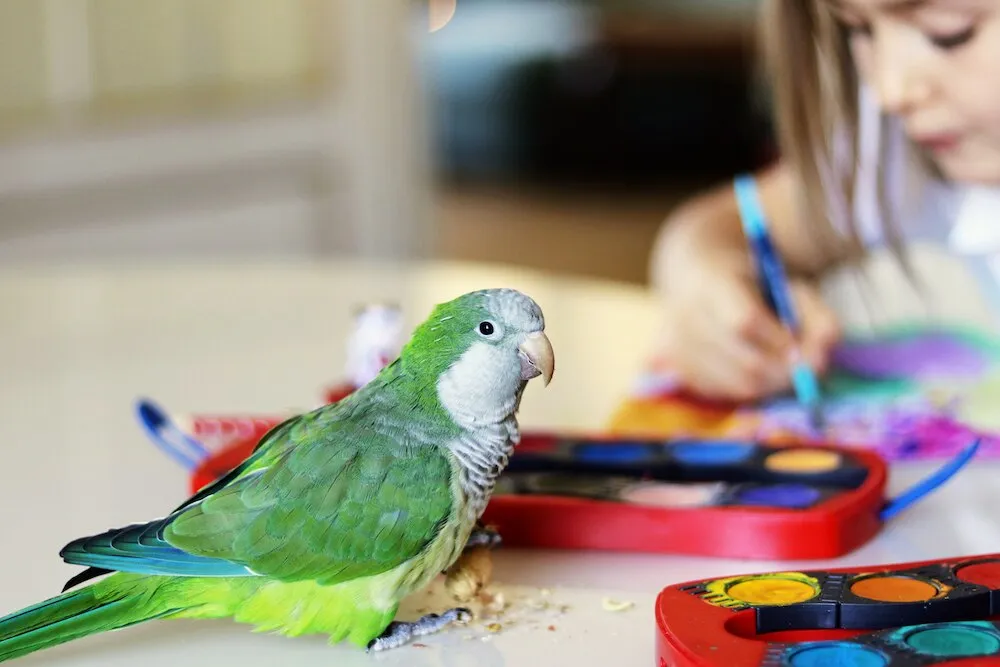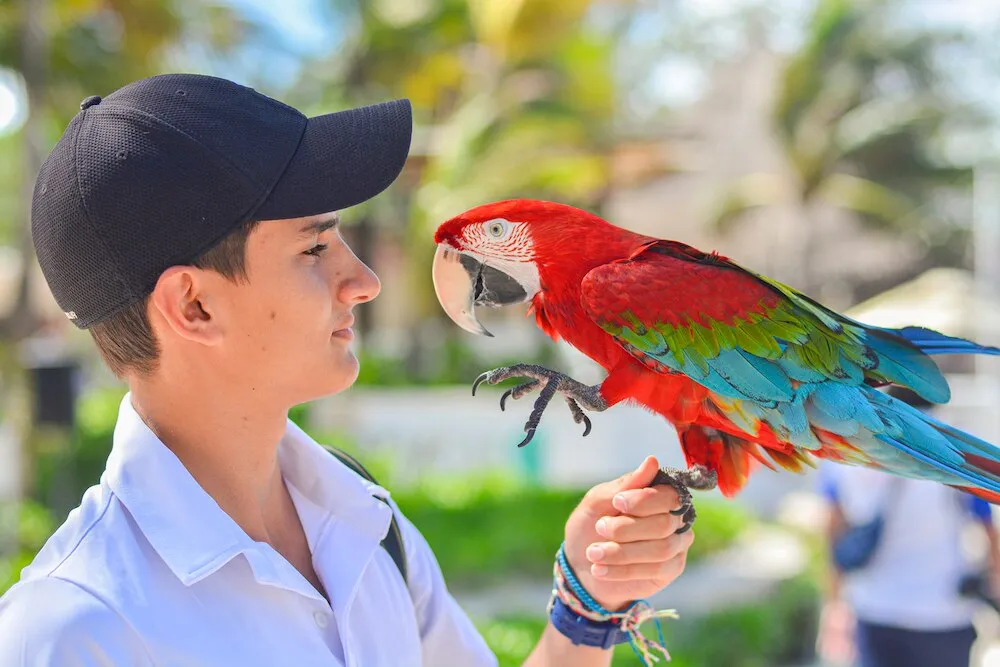Are you searching for a lively, interactive pet that can brighten your home with chatter? If traditional options like dogs and cats don’t quite fit your lifestyle, the best talking birds might be the perfect choice. These feathered companions offer entertainment, socialization, and even conversation-like interactions. However, owning a talking bird demands commitment similar to caring for a dog—daily cleaning, playtime, training, and potential vet costs. While not all birds from “talkative” breeds will speak, many can learn impressive vocabularies with patience and practice. Discover the top talking birds, their abilities, care needs, and what to expect as a pet owner.
Birds are unique individuals; a quiet species member might surprise you with words, while a chatty one may prefer whistles. Factors like early handling, repetition, and environment play key roles in their speech development. According to veterinary experts, hand-raised young birds from reputable sources adapt best. Let’s explore the best talking birds ranked by popularity, vocabulary potential, and suitability for different experience levels.
Budgerigar (Budgie or Parakeet)
Budgerigars, often called budgies or parakeets, pack big personalities into small bodies. These intelligent, social birds thrive on human interaction and can develop surprisingly large vocabularies. With proper training, they hold records for the largest bird vocabularies ever, learning short phrases, long sentences, and even tunes. Averaging 6-8 inches long and just one ounce, budgies live 5-8 years on average.
Their voices may sound gravelly, but enthusiasm makes up for it. Budgies tolerate time in spacious cages during work hours, especially with a TV or radio for language exposure. They’re quieter than larger parrots, ideal for apartments.
For best results, adopt a young, hand-raised budgie from a rescue or ethical breeder. Daily out-of-cage play builds trust and speech skills. Provide a varied diet of pellets, seeds, veggies, and fruits, plus toys for mental stimulation. Budgies exemplify why they’re among the best talking birds for beginners seeking low-maintenance joy.
Cockatiel
Cockatiels stand out as gentle, affectionate pets that bond deeply with families. At 12-14 inches and 2.5-4 ounces, they live 10-14 years and love cuddles. Males excel at talking, potentially mastering 250 words, phrases, and whistles, while females chirp more.
Consistent training from a young age unlocks their potential. They’re beginner-friendly, adapting well to routines with perches, mirrors, and foraging toys. A pellet-based diet supplemented by fresh produce keeps them healthy.
Socialization prevents boredom, which can lead to screaming. Place their cage in a busy room for exposure to speech. Cockatiels offer a perfect entry into talking birds, blending companionship with vocal talents.
Quaker Parakeet (Monk Parakeet)
Quaker parakeets impress with quick learning and clear voices. Measuring 11-12 inches and 3-5 ounces, they live up to 30 years. Beginners appreciate their ease, though check local laws as they’re restricted in some areas.
They grasp 50+ words and mimic household sounds like dogs barking. Repetition accelerates progress for young or older birds alike. Louder than budgies but social, they need interaction and a large cage.
 Quaker parakeet interacting with child
Quaker parakeet interacting with child
Feed pellets, veggies, and limited seeds; avoid chocolate or avocado. Quaker parakeets shine as best talking birds for families wanting fast-talking pets.
Ring-necked Parakeet (Indian Ringneck)
Ring-necked parakeets master full sentences with clear tones, measuring 14-17 inches and 5 ounces. Revered in some cultures for mimicking prayers, they require more repetition due to complex phrases.
Noisier and stubborn, they’re suited for experienced owners with noise tolerance—not apartments. Lifespan reaches 20+ years.
Daily handling, puzzle toys, and a chop diet (veggies, pellets) support training. They’re advanced talking birds rewarding dedicated owners.
Eclectus Parrot
Eclectus parrots, at 17-20 inches and 13-19 ounces, bridge beginner and advanced care. Gentle yet needy, males train slightly easier. They learn varied words with interaction but stay quieter than Amazon parrots.
Lifespan: 30-50 years. Demand out-of-cage time and socialization.
A diet heavy in pellets and produce prevents deficiencies. Ideal for intermediates eyeing best talking birds.
Yellow-naped Amazon
Yellow-naped Amazons top talkers, forming coherent sentences with context awareness. At 15-27 inches and 16-23 ounces, they live to 80 years. Clear voices and singing delight owners.
Moody with potential bites, especially males in breeding season, they’re for experts. Learn body language to avoid issues.
Pellets, nuts, and fruits fuel their energy. Among elite talking birds, they demand commitment.
Cockatoo
Cockatoos crave constant affection, often called “velcro birds.” They pick up words for attention but prioritize bonding over vast vocabularies. Large and noisy, they suit dedicated owners with time.
Lifespan: 40-70 years. Handle mood swings and dust.
 Cockatoo interacting with pet parent
Cockatoo interacting with pet parent
For those valuing interaction over speech, cockatoos excel.
Macaw
Macaws boast massive size, personality, and beaks. They learn vocabularies amid squawks and mimics but need firm training to curb habits like lunging.
Lifespan: 50-80 years. Tolerate noise and chewing.
 Macaw interaction with pet parent
Macaw interaction with pet parent
Advanced owners thrive with these charismatic talking birds.
Myna Bird
Mynas dazzle with 100 words, whistles, and screeches. Independent at smaller sizes, they prefer fruit-heavy diets, leading to messier care. Lifespan: up to 25 years.
Specialized feeding rewards patient owners with unique vocalizations.
African Grey Parrot
African Greys claim top intelligence, rivaling toddlers with 1,000+ words and problem-solving. At 13 inches, they live 50-80 years but get moody and destructive without experience.
Expert owners only; frequent rehoming harms them.
Key Considerations Before Adopting a Talking Bird
Choosing among the best talking birds means lifelong responsibility. Research species traits, noise levels, diets, and legality. Visit rescues or breeders; observe individuals. Consult avian vets for setup advice—cages, toys, nutrition.
Rewards include companionship, laughs, and bonds transcending speech. Whether a chatty budgie or wise African Grey, prepare for joy and challenges.
Ready to welcome a talking bird? Research thoroughly, start small if new, and consult experts like avian veterinarians for tailored guidance.
References
- Guinness World Records: Largest bird vocabularies.
- PetMD Care Sheets: Budgie, Cockatiel, etc.
- Written by Sandra C. Mitchell, DVM, DABVP (Veterinarian, New York State College of Veterinary Medicine graduate).
